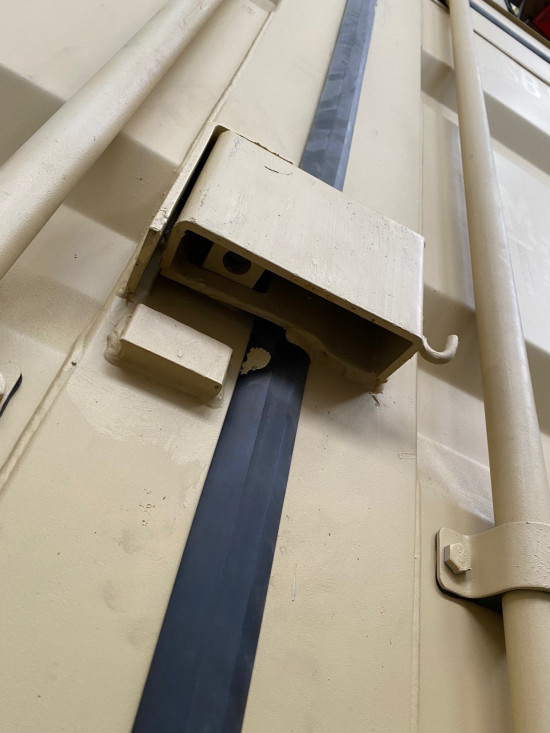What Is The Correct Name For This Plate?

Anti-racking Plate, TIR Plate, or Lock Box. No matter what you call it they are a vital resource to the container’s security from thieves or the forces of a swaying stack of containers on a shipping vessel. Many people conflate all three terms, but they all have different specific uses with some having more of a hybrid blend than others. When it comes to anti-racking plate it is specifically welded onto the right rear door in the middle with bumpers welded on the left door above the plate and below it with some space in between to allow for some movement, but not too much without the bumpers pushing back with support during transverse racking. The thicker the plate and the stronger the welds the better. In my opinion, this is a must for all heights of containers and especially when the rear cargo door is modified or there are modifications on the side walls near the cargo doors. When it comes to 8-foot-tall containers they can sometimes get away without having them, but it is suggested. When it comes to 8’6” and 9’6” High Cubes it is a must. The taller the container the more prevalent it is to fail during transverse racking. ISO standards state that when it comes to testing, during the time the load is held pushing or pulling on the side of the corner casting the front and rear corner castings cross measurement deflections cannot exceed 2.36 inches. Next, the TIR plate works a bit different in that its purpose is to secure the container from thieves and not from transverse forces. The TIR plate full name is in French as Transports Internationaux Routiers or in English as International Road Transports. This convention was set up to ensure containers were not opened during travel before the container reached its destination. This is more heavily needed in Europe because the containers go over country lines rather than state lines like here in the US. The plate works as it cannot allow the doors to open without one being opened first that is already locked. This gives the thieves more of an obstacle and makes it impossible to not damage without closing leaving no trace of theft. The final add on is a Lock Box, which has both anti racking support and a security locking system. The Lock Box is positioned midway on the exterior of the container. It supplies a housing for a lock to be added locking the doors and it also has ledges and an interior support system to help support the container doors from racking too much. In the end, all three plates are useful, but have specific and different functions.
